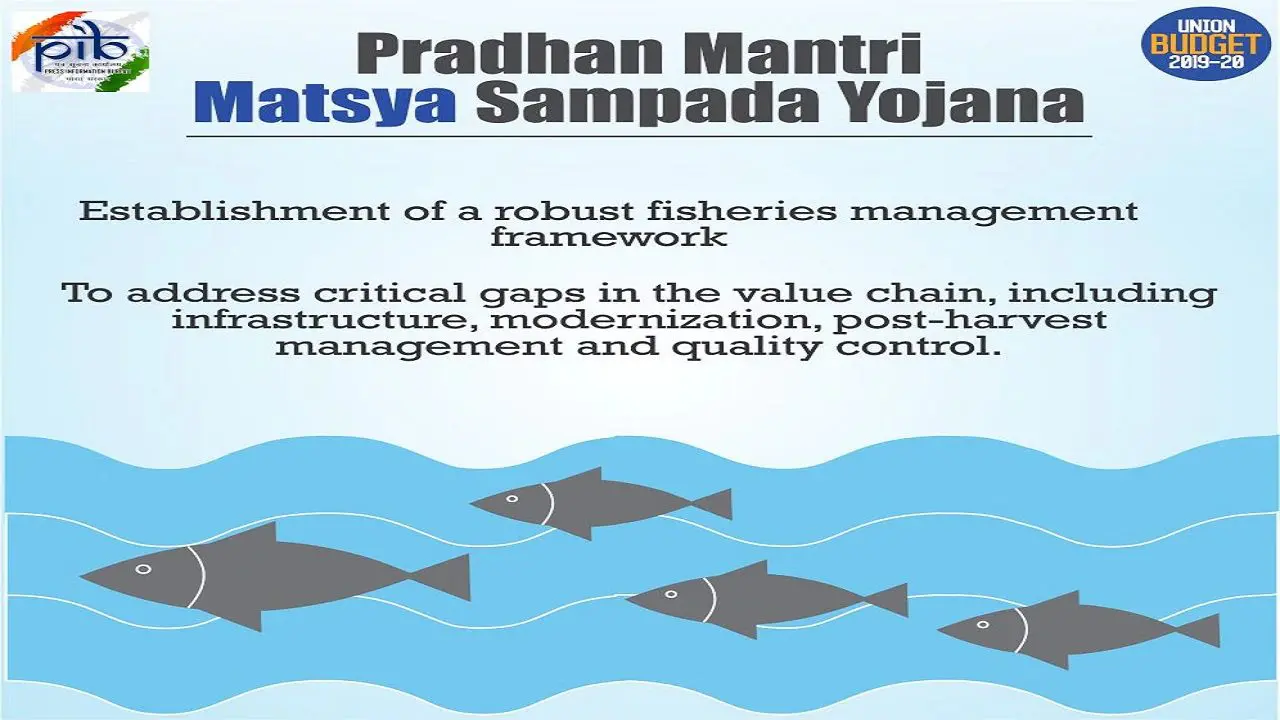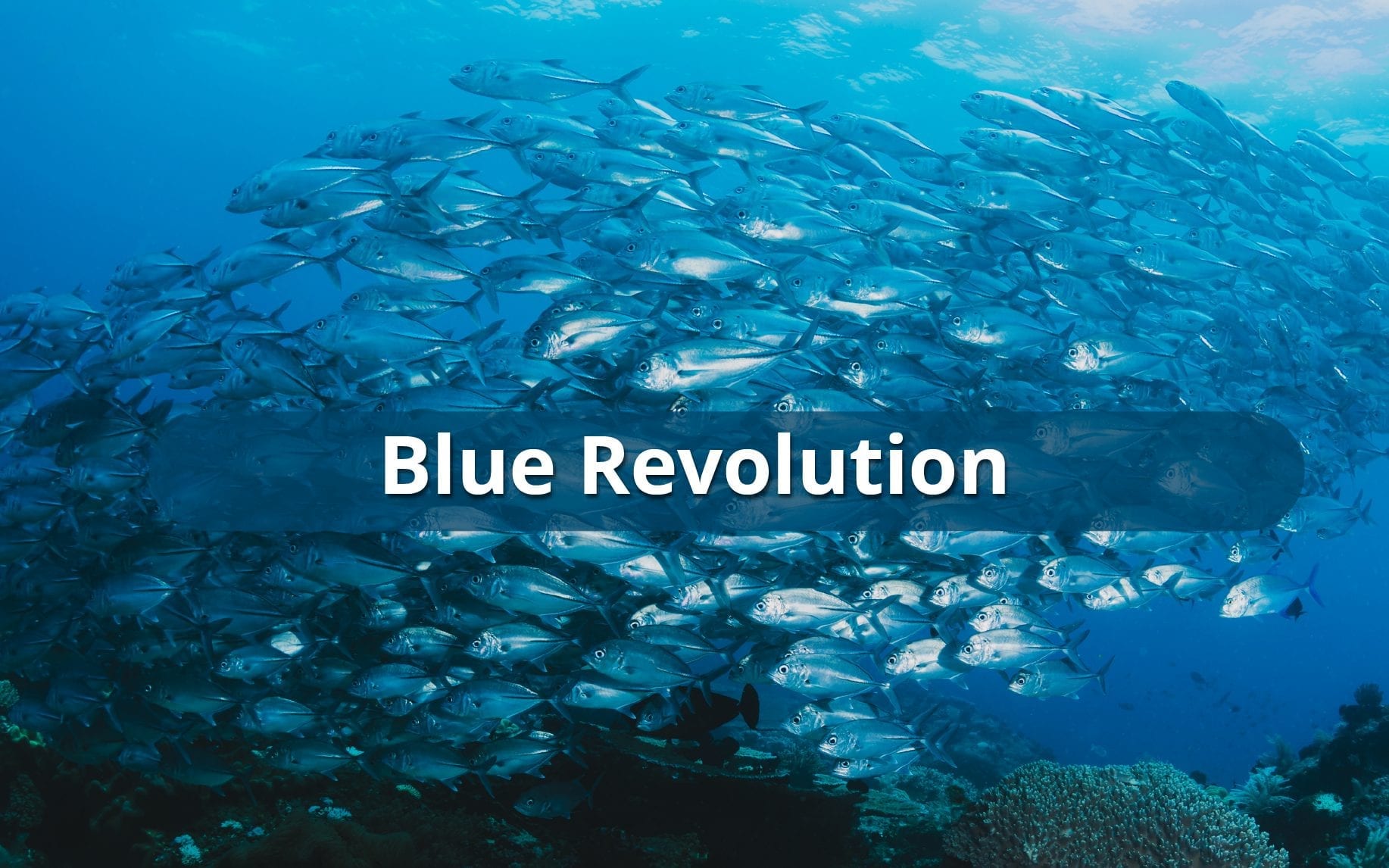19 Aug Pradhan Mantri Matsya Sampada Yojana
Pradhan Mantri Matsya Sampada Yojana, and Blue Revolution
Why in News: Inspired by Pradhan Mantri Matsya Sampada Yojana, and to bring ‘Blue Revolution’ TDB-DST (Technology Development Board, a statutory body under the Department of Science and Technology, Govt) supports its first aquaculture project.
About Pradhan Mantri Matsya Sampada Yojana
TDB-DST contributes to the ‘Blue Revolution’ through technology intervention, supporting sustainable & responsible development of the fisheries sector in India. TDB-DST enters a new domain and funds its first ever ‘Aquaculture’ project using ‘state of the art’ Israeli technology for the production of Tilapia Fish.
TDB-DST supports M/s Fountainhead Agro Farms Private Limited, Navi Mumbai, Maharashtra for an ‘Advanced, Intensive, All Male Tilapia Aquaculture Project with Israeli Technology
Fisheries is one of the fastest growing sectors amongst the primary producing sectors. The sector plays a vital role in the economic and overall development of the country, also referred to as the “sunrise sector”, it is poised to bring immense potential through equitable and inclusive growth.
The sector is recognized as a powerful engine for providing employment to 14.5 million people and sustaining a livelihood for the 28 million fishermen community of the country. Thus, the sector urges young entrepreneurs of the country to come forward and offer solutions, resolving on-ground challenges through technology interventions and innovative solutions.
To promote this, the cabinet under the chairmanship of the Hon’ble Prime Minister, came up with ‘Pradhan Mantri Matsya Sampada Yojana (PMMSY)’ to bring about the ‘Blue Revolution’ through sustainable and responsible development of the fisheries sector in India. The scheme targets to enhance fish production to 220 lakh metric tons by 2024-25, at an average annual growth rate of about 9%. The ambitious scheme also aims to double the export earnings to Rs.1,00,000 crore and generate about 55 lakhs of direct and indirect employment opportunities in the fisheries sector over a period of the next five years.
Realizing the potential of the Fisheries sector, the Technology Development Board, a statutory body under the Department of Science and Technology, Govt. of India supports M/s Fountainhead Agro Farms Private Limited, Navi Mumbai, Maharashtra for ‘Advanced, Intensive, All Male Tilapia Aquaculture Project with Israeli Technology’. The board has penned a mutual agreement, to provide loan assistance of Rs. 8.42 crores out of the total project cost of Rs. 29.78 crores to the company.
‘Tilapia’ has emerged to be one of the most productive and internationally traded food fish in the world. The culture of tilapia has become commercially popular in many parts of the world and fishery experts have dubbed the tilapia an “aquatic chicken” due to its quick growth and low maintenance cultivation. Today, if any fish could be named a global fish, no better name can be thought of than Tilapia.
In order to facilitate the culture of Tilapia in India in a responsible manner, M/s Fountainhead Agro Farms Private Limited envisages the setting up of a complete production line (from breeding to full fish) in Mudhol (Karnataka).
The company aims to produce 500 tons of Tilapia, to be grown from the imported parent broodstock ‘Hermon’ from Nir David Fish Breeding Farm, Israel.
Hermon is a hybrid of two selected strains of Tilapia, namely Oreochromis Niloticus (Male) and Oreochromis Aureus (Female), and is known for special characteristics such as high growth rate; resistance to low temperature; light (attractive) color; all hybrid fry progeny of males only, without the conventional system of usage of hormones.
The company has adopted advanced Israeli Technology from Aquaculture Production Technology Limited (APTIL), Israel (under Technology Service Agreement signed in October 2020) for landlocked locations through closed loop farming for the arid zone with seasonal water supply from rivers, which may be replicated throughout India in multiple arid landlocked locations with reasonable water sources.
In order to suit Indian conditions, the complete engineering of the facility is tuned as per the requirement of site conditions such as land availability, water availability, weather conditions, availability of the surrounding resources, soil conditions, and topography.
Sh. Rajesh Kumar Pathak, IP&TAFS, Secretary, TDB said that “The Govt. of India has placed special attention to the fisheries sector with a view to uplift the fishermen community of India economically through ‘Blue Revolution’.
The sector holds vast potential for export, especially the ‘Tilapia Fish’ considering its huge demand in the global market. Also, the imported technology being ‘one of its kind’ will be a great addition to Pradhan Mantri Matsya Sampada Yojana (PMMSY), the ambitious scheme of Hon’ble PM, which aims to double the export earnings to Rs.1,00,000 crore from fisheries sector.
Objectives of Pradhan Mantri Matsya Sampada Yojana
- PMMSY is designed to address critical gaps in fish production and productivity, quality, technology, post-harvest infrastructure and management, modernization and strengthening of the value chain, traceability, establishing a robust fisheries management framework, and fishers’ welfare.
While aiming to consolidate the achievements of the Blue Revolution Scheme, PMMSY envisages many new interventions such as
- fishing vessel insurance,
- support for new/up-gradation of fishing vessels/boats, Bio-toilets,
- Aquaculture in saline/alkaline areas, Sagar Mitras, FFPOs/Cs,
- Nucleus Breeding Centers,
- Fisheries and Aquaculture start-ups,
- Incubators,
- Integrated Aqua parks,
- Integrated coastal fishing villages development etc
- PMMSY scheme primarily focuses on adopting ‘Cluster or Area based approaches’ and the creation of Fisheries clusters through backward and forward linkages.
- Special focus will be given to employment generation activities such as seaweed and ornamental fish cultivation.
- It emphasizes interventions for quality brood, seed, and feed, special focus on species diversification, critical infrastructure, marketing networks, etc.

Pradhan Mantri Matsya Sampada Yojana
The Blue Revolution
The Blue Revolution in India was launched during the 7th Five Year Plan (1985-1990) during the sponsorship of the Fish Farmers Development Agency (FFDA) by the Central Government of India. Later, during the 8th Five Year Plan (1992-97), the Intensive Marine Fisheries Program was launched, and eventually, the fishing harbors in Visakhapatnam, Kochi, Tuticorin, Porbandar, and Port Blair were also established over time.
The Ministry of Agriculture and Farmers Welfare along with the Department of Animal Husbandry, Dairying & Fisheries planned to restructure this scheme along with the other ongoing schemes by merging it under a single umbrella of ‘Blue Revolution’. This scheme focused on the development and management of fisheries controlled by the National Fisheries Development Board (NFDB).
The components that are included under the Blue Revolution Schemes are :
- National Fisheries Development Board (NFDB) and its activities
- Strengthening of Database & Geographical Information System of the Fisheries Sector
- Development of Inland Fisheries and Aquaculture
- National Scheme of Welfare of Fishermen
- Development of Marine Fisheries, Infrastructure, and Post-Harvest Operations
- Monitoring, Control, and Surveillance (MCS) and other need-based Interventions
- Institutional Arrangement for the Fisheries Sector
Blue Revolution/Neel Kranti Mission
The Nili Kranti Mission aimed to enhance the economic condition of India through the augmentation of fisheries and thus contribute towards food and nutritional security. The utilization of water resources for the development of fisheries was done by the Neel Kranti Mission in a sustainable manner.

Blue Revolution
The objectives of the Neel Kranti Mission
- Completely tapping the total fish potential of India on both islands as well as in the marine sector and triple the production by the year 2020.
- Transforming the fisheries sector into a modern industry through the utilization of new technologies and processes.
- Doubling the income of the fishers through increased productivity and improving the post-harvest marketing infrastructure including e-commerce, technologies, and global best innovators.
- To ensure the active participation of the fishers and the fish farmers in income enhancement.
- Tripling the export earnings by the year 2020 with a major focus on the benefits covering the institutional mechanisms.
- Developing the nutritional and food security of the nation.
Download the PDF Now:
Plutus IAS current affairs eng med 19th August 2022
Source:
Daily Current Affairs for UPSC
Collect the best daily Current Affairs for the UPSC examination from Plutus IAS. We provide the latest current affairs for the UPSC examination free of cost. So today read current affairs for the UPSC examination from us.
Also, read weekly and monthly current affairs for IAS exam preparation.



No Comments